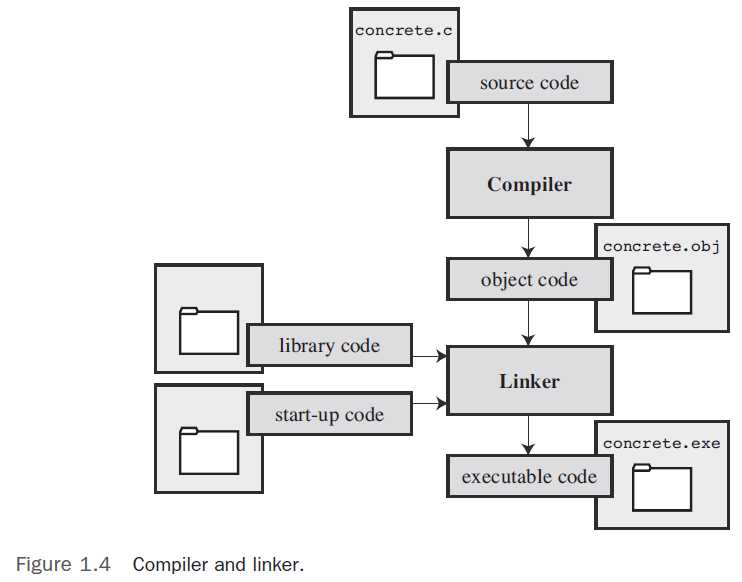标签:func let idt struct ems file ogr convert AMM
Object Code Files, Executable Files, and Libraries
The basic strategy in C programming is to use programs that convert your source code file to an executable file, which is a file containing ready-to-run machine language code. C implementations typically do this in two steps: compiling and linking. The compiler converts your source code to an intermediate code, and the linker combines this with other code to produce the executable file. C uses this two-part approach to facilitate the modularization of programs. You can compile individual modules separately and then use the linker to combine the compiled modules later. That way, if you need to change one module, you don’t have to recompile the other ones. Also, the linker combines your program with precompiled library code. There are several choices for the form of the intermediate files. The most prevalent choice, and the one taken by the implementations described here, is to convert the source code to machine language code, placing the result in an object code file , or object file for short. (This assumes that your source code consists of a single file.) Although the object file contains machine language code, it is not ready to run. The object file contains the translation of your source code, but it is not yet a complete program.
The first element missing from the object code file is something called startup code , which is code that acts as an interface between your program and the operating system. For example,you can run an IBM PC compatible under MS Windows or under Linux. The hardware is the same in either case, so the same object code would work with both, but you would need different startup code for Windows than you would for Linux because these systems handle programs differently from one another. The second missing element is the code for library routines. Nearly all C programs make use of routines (called functions ) that are part of the standard C library. For example, concrete.c uses the function printf() . The object code file does not contain the code for this function; it merely contains instructions saying to use the printf() function. The actual code is stored in another file, called a library . A library file contains object code for many functions. The role of the linker is to bring together these three elements—your object code, the standard startup code for your system, and the library code—and put them together into a single file, the executable file. For library code, the linker extracts only the code needed for the functions you use from the library (see Figure 1.4 ).

In short, an object file and an executable file both consist of machine language instructions.
However, the object file contains the machine language translation only for the code you used, but the executable file also has machine code for the library routines you use and for the startup code.
On some systems, you must run the compile and link programs separately. On other systems, the compiler starts the linker automatically, so you have to give only the compile command.
C Primer Plus: Object Code Files, Executable Files, and Libraries
标签:func let idt struct ems file ogr convert AMM
原文地址:https://www.cnblogs.com/sloanwu/p/12780512.html